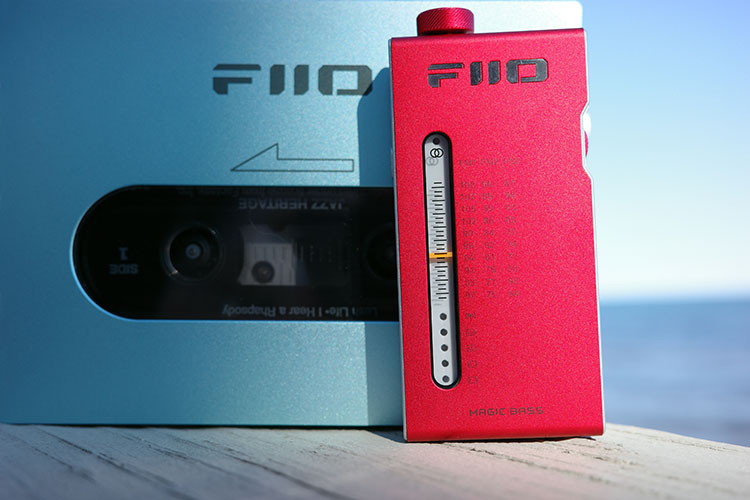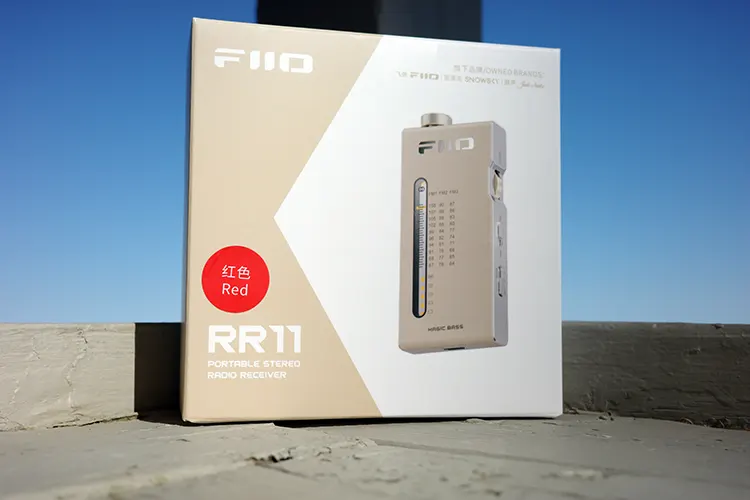Synergy
Power
When pushed beyond the 1300 level on the volume dial, the sound became not only loud but also meant I ended up switching off the Magic Bass.
I was able to reach very loud levels on the FM and amplifier side, to the point where I had to turn the volume down.
The reported L+R≥40mW+40mW (32Ω, THD+N<1%) level won’t win any awards, but carried itself with aplomb (a word I use often). Going about its business, the RR11 could reach levels I could not tolerate for long.
USB-DAC
When used in amplifier mode, the connection is immediate and stable. For most operations of this sort, the RR11 would be used for the amplification part, and not as a dedicated DAC.
Providing plenty of additional power to my MacBook Pro, I found the headroom to be quite linear, without massive jumps as can sometimes happen with dongles/amplifiers.
Having a BT option would have been nice, but added not only cost, but at the expense of the sexy, svelte character of the unit. I’m OK without BT for this purpose.
Pairings
Using the earbuds included, the sound was competent as expected, and one that could be thoroughly enjoyed without missing anything. Used in FM mode, the sound qualities were as expected, competent and without bother.
Playing low levels came across with a sound that was quite good, but did suffer from channel imbalance at the quietest setting. In quiet listening settings, this could come into play, since you have to raise the volume to hear each equally.
Switching to the Drop x Campfire Audio Dark Star, the sound quality increased markedly, of course. Sensitive to a ‘T’, I could hear noise when used in amplification mode, which stopped when the music started.
For an inexpensive dongle, paired with a much more expensive IEM, the sound was satisfying and competent. I especially appreciated the accuracy of the volume dial here.
If I were to utilize the RR11 as a dongle, having a nice pair of IEMs with which to fall back upon would be a good idea, even though the included JF11 earbuds are quite competent.
Select Comparisons
Sony Walkman WM-FX487
Features
A classic Walkman with a cassette player, which I also used when I compared the FiiO CP13, the FX487 carried on the tradition of thunderous bass from a quite competent music player.
While no power numbers could be found, copious amounts exude from the Sony, as well as mega amounts of bass, which can be tailored by a menu. Running either 2-AA batteries or a dedicated power option allowed for use on the go, or in place
Design
My Sony has decades of patina to its mostly plastic design, but has held up well. All lettering is still readable, and the buttons function as expected. Yes, this is a refurbished unit, but still fully functional.
Carrying a size slightly larger than a cassette, the FX could be pocketable, or, as was in vogue at the time, using the included belt clip (MIA for my device).
All buttons are electronic in their implementation, save the volume dial. The Sony models were ahead of their time in that regard, and that they still function is a testament to the build quality.
A simple digital screen shows frequency and sound “options” such as Mega Bass (and GRV, which is MEGA groovy bass), battery level, stereo, and options such as sound options available.
The Sony is more powerful, with multiple tuning options, even though it is a few decades older. Coming with 20 presets helps you quickly get to your favorite stations, too.
Performance
Some might think this isn’t a fair comparison, but one could just as easily say that it is the perfect comparison. How far have the capabilities come since the days of a Walkman? The truth is that even with digital technologies, the differences might just come down to personal preferences.
The Sony provides more customizing options for the sound and has a decent cassette player to boot.
The bass reaches deeper with more authority, but less control (to be expected), but there is a certain appeal to the vintage nature of the Walkman that I just cannot get over.
The midrange does not come forward as much as the RR11, and the treble reach isn’t as high either, but when taken as a whole presents a better FM picture to me.
My Sony shows off its FM capabilities better than the RR11, but with a much looser character. One does not come to a Walkman of this vintage for detail retrieval and clarity. You come for the emotion.
The GRV bass setting is ridiculously high, and would make a basshead blush, but the truth is that the appealing sound emanating from within the MB setting hearkens back to my earlier life, affording a close relationship to the music.
The RR11 comes across as almost sterile when compared here (not a fair one, I might add), and with better clarity, but lacks to emotive effect of the Sony.
My Verdict
The FiiO RR11 tries hard to fill a niche that the company sees as currently lacking. An affordable FM player that doubles as a dongle/amplifier for your smartphone or desktop unit is a novel approach, giving the RR11 a bit more versatility.
The sound coming forth is fairly tight and controlled, but lacks deep-reaching bass. The midrange picks up the slack, giving good height to the soundstage, allowing better separation of the music than one might expect.
When used as an amplifier, the RR11 comes across with good sound qualities befitting of the level at which it sits.
Having the ability to reach quite high volume levels without control can be a death knell, but thankfully, the FiiO offers high volume levels with control when used as a dongle. And this may be its strongest point.
Trying to mimic the master, the Sony Walkman is a tough draw. While the RR11 comes across as competent, it falls behind the Sony in features and the low-end grunt. It also presents a more analytical sound compared to Sony’s emotive musicality. Take that as you will.
But, when taken as an overall, the FiiO RR11 comes across as a competent portable FM radio player, with the added trick of doubling up as a dongle/amplifier with good results.
FiiO RR11 Technical Specifications
- Hardware solution: SoC: MS430, FM radio: SI4831, analog sound effect and amp: FIIO DDB AS100 custom chip
- Color: Titanium gold/Black/Red/Silver
- Dimensions: About 83.2×39.4x13mm
- Weight: About 46g
- Frequency Modulation (FM): FM1: 87~108MHz, FM2: 76~90MHz, FM3: 64~87MHz
- Adaptive impedance: 8~100Ω
- Antenna: Earphones JF1 work as an antenna, plus internal
- USB port: Type-C USB (charging port, analog input)
- Headphone output: Standard 3.5mm SE
- Power supply: DC 5V/≥1A
- Charging time: About 2 hours
- Battery Life: FM mode 3.5mm headphone out: ≥8.5h, using FM, 32Ω, 40mV out volume, MP3 44.1kHz/16bit playing format & track
- AMP mode 3.5mm headphone out: ≥17.5h: 32Ω, 40mV out volume, MP3 44.1kHz/16bit playing format & track
- Output amplitude: L+R≥4mV+4mV
- THD+N: <3%
- Noise-limited sensitivity: ≤15dBuV (S/N=30dB)
- SNR: ≥45dB (A-weighted)
- Amplifier mode:
- Output power: L+R≥30mW+30mW (16Ω, THD+N<1%), L+R≥40mW+40mW (32Ω, THD+N<1%), L+R≥5mW +5mW (300Ω, THD+N<1%)
- Output impedance: <1Ω
- Crosstalk: ≥65dB
- Output amplitude: 1.1Vrms
- THD+N: <04% (1kHz/-24dB@32Ω)
- SNR: ≥100dB (A-weighted)
- Frequency response: 20Hz~95kHz: attenuation<3dB, 20Hz~20kHz: attenuation<1dB
- Noise floor: <10uV (A-weighted)
- Peak output voltage: 3Vpp
- Input sensitivity: 0.9V






